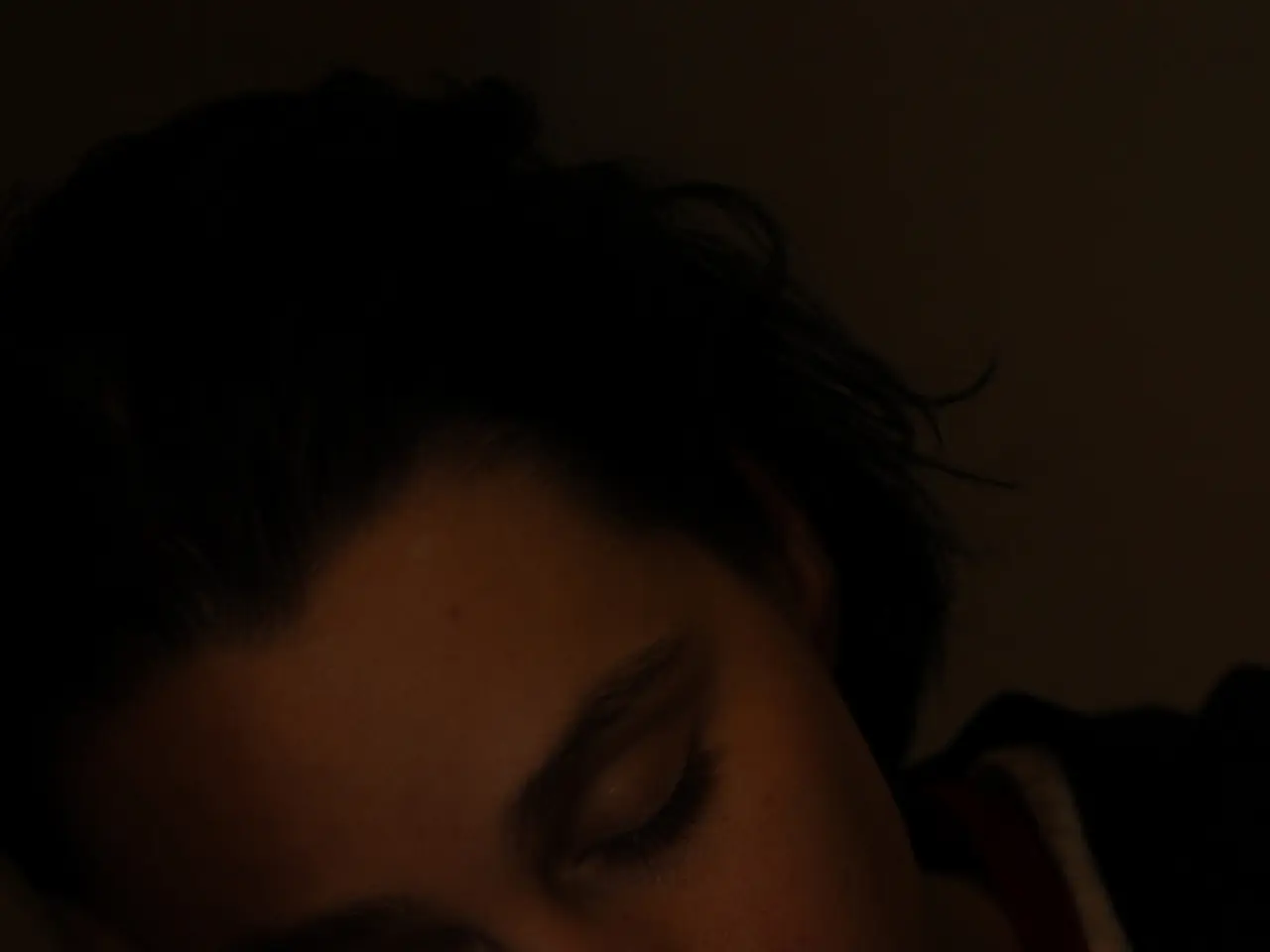Verbalizing During Sleep: Triggers, Consequences, and Strategies for Suppression
Sleep talking, also known as somniloquy, is a common sleep disorder that affects many individuals in the United States. This condition involves individuals speaking during sleep, and it can occur during both rapid eye movement (REM) and non-rapid eye movement (NREM) sleep.
Sleep talking is often associated with various sleep disorders and neurological conditions, including Parkinson's disease, post-traumatic stress disorder (PTSD), and REM sleep behavior disorder (RBD).
REM Sleep Behavior Disorder (RBD) is a parasomnia characterized by the lack of normal muscle paralysis during REM sleep, leading to physical enactments of dreams such as talking or moving. RBD is strongly linked with neurodegenerative diseases like Parkinson's disease and Lewy body dementia. It often precedes or coexists with Parkinson’s disease and is considered an early marker, with a high percentage of individuals with RBD eventually developing Parkinsonian disorders over years of follow-up.
Parkinson’s disease patients frequently experience multiple sleep disturbances, including REM sleep behavior disorder and sleep talking. Sleep disturbances in PD also correlate with cognitive decline and mental health issues like anxiety and depression, which can exacerbate sleep problems.
PTSD is linked to disrupted sleep patterns, including nightmares, night terrors, and sleep talking related to trauma re-experiencing during sleep. Sleep disturbances in PTSD worsen symptoms and may involve abnormal or intense dream enactments.
Common sleep disorders, such as parasomnias (including sleep talking), often occur alongside these neurological and psychiatric conditions. Environmental factors (e.g., stress, medications, head injury) further contribute to these disturbances in vulnerable populations.
If a person is concerned about their sleep and sleep talking, a doctor or sleep specialist can help determine if it's linked to another sleep disorder like obstructive sleep apnea. Recurrent episodes of sleep talking might indicate an underlying sleep disorder.
Cognitive behavioral therapy (CBT) is a potential treatment for parasomnias, including sleep talking. CBT helps people employ relaxation skills to reduce anxiety related to sleep talking and focuses on changing behaviors, thoughts patterns, improving emotional regulation, and strengthening coping mechanisms. Improving the quantity and quality of sleep may also help prevent episodes of sleep talking.
It's important to note that consuming too much caffeine, especially in the evening, can impact restful sleep and potentially contribute to sleep talking.
While there is currently no definitive solution to stop sleep talking, understanding its associations with various conditions can provide critical clinical insight into the progression or management of these diseases. Addressing sleep quality and identifying parasomnias can thus be crucial in the treatment and care of individuals with sleep disorders, neurological diseases, or psychiatric conditions.
- REM sleep behavior disorder (RBD), characterized by the lack of normal muscle paralysis during REM sleep, is linked to neurodegenerative diseases like Alzheimer's and Parkinson's disease.
- Aq sleep talking, speaking during sleep, can be predictive of underlying mental health issues like depression in individuals, particularly those with Parkinson’s disease.
- PTSD patients often experience sleep disturbances, including sleep talking, nightmares, and night terrors, which can worsen symptoms and involve abnormal dream enactments.
- Sleep-and-wellness and mental-health professionals might use cognitive behavioral therapy (CBT) to treat parasomnias, including sleepwalking and sleep talking, by teaching relaxation skills and addressing anxiety related to these sleeping disorders.
- Excessive caffeine consumption, especially in the evening, can negatively impact sleep quality and potentially contribute to sleep talking and other sleep disorders.




